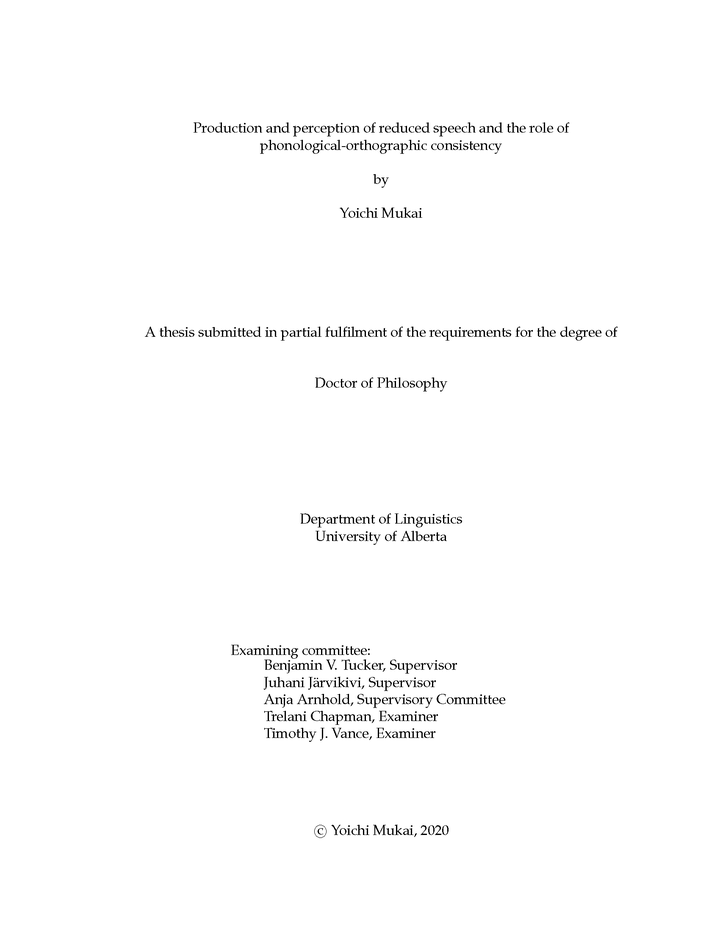Production and perception of reduced speech and the role of phonological-orthographic consistency

Abstract
This dissertation examines the effect of orthography in the perception of spontaneous Japanese speech by investigating how phonetic reduction interacts with the effect of sound-to-spelling inconsistencies (i.e., phonological-orthographic (P-O) consistency effect) for L1 and L2 Japanese speakers. In order to accomplish this, we first conducted a corpus analysis to investigate the distribution and degree of phonetic reduction across various styles of speech. Specifically, we examined the effect of speech style on the realization of word-medial voiced stops and word-medial nasals across four different styles of speech (from spontaneous to read speech). The results indicated that the most spontaneous speech demonstrates greater reduction than the least spontaneous speech, and the acoustic results of reduction and their distributional patterns across speech styles for voiced stops are comparable between Japanese and English, and nasals also indicate comparable reduction patterns. We then conducted two pupillometry experiments (Go-NoGo and delayed naming tasks) to compare the time-course of the P-O consistency effect between reduced (spontaneous speech-like) and unreduced (read speech-like) word forms for L1 and L2 Japanese listeners. The two experiments provide evidence that the phonetic realization of Japanese words (reduced or unreduced) influences the consistency effect for both listeners during spoken word comprehension. Reduced word forms caused both L1 and L2 listeners to incur additional processing costs for comprehension, and both listeners exerted the P-O consistency information to increase efficacy in the processing of reduced words. While the processing cost of reduced forms was attenuated in consistent words for L1 listeners, the cost was attenuated in inconsistent words for L2 listeners. Within the L2 listeners, the high proficiency learners showed a clear P-O consistency effect that weakens as L2 proficiency decreases in the delayed naming task, but in the Go-NoGo task, the basic proficiency learners exhibited the clear consistency effect and it weakened as L2 proficiency increase. In summary, our findings suggest that the phonetic realization of Japanese words matters for the effect of P-O consistency and the consistency effect plays an important role in the processing cost of reduced forms.